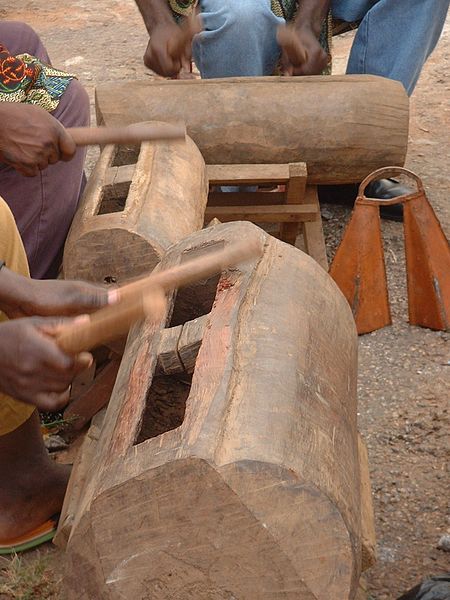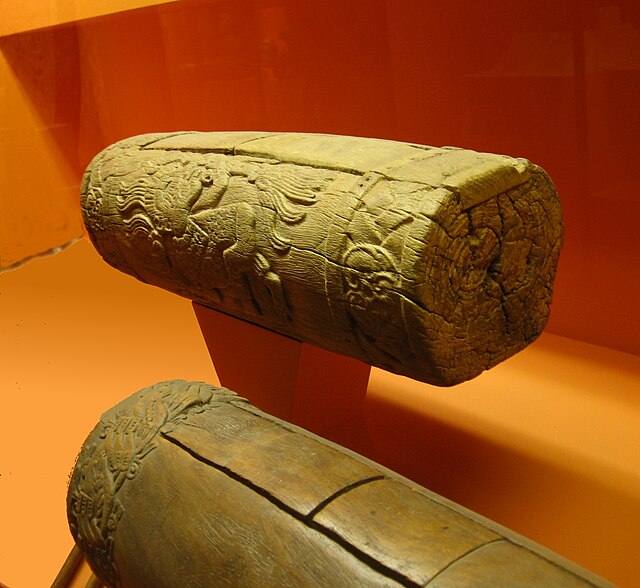Developed and used by cultures living in forested areas, drums served as an early form of long-distance communication, and were used during ceremonial and religious functions.
Bamileke people tamtam
A slit drum or slit gong is a hollow percussion instrument. In spite of its often being called a drum, it is not a true drum because it lacks a drumhead, the membrane stretched across the top of a true drum). It is classed instead as an idiophone in which the entire instrument vibrates, usually carved or constructed from bamboo or wood, in the form of a mostly closed hollow chamber with one or more slits in it. It is played by striking near the edge of the slit. In some designs, the slit is a single straight line; in others, the slit is used to create one or more "tongues", achieved by cutting three sides of a rectangular shape and leaving the fourth side attached. Most slit drums have one slit, though two and three slits occur. Tongues of different areas or thicknesses will produce different pitches. Slit drums are used throughout Africa, Southeast Asia, and Oceania. In Africa such drums, strategically situated for optimal acoustic transmission, have been used for long-distance communication.

Bamileke drummers in Cameroon's West Province.
Chromatically tuned slit drums, range C3–C4
Wooden fish
Two Aztec slit drums, called teponaztli. The characteristic "H" slits can be seen on the top of the drum in the foreground.




